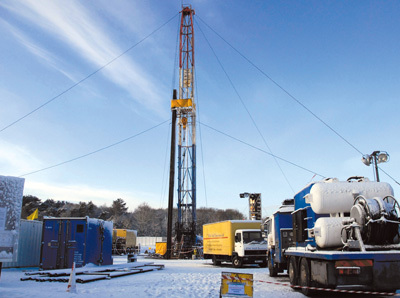
Saudi Arabia may not have the grip over oil prices that it once did, but it still knows how to prime the market.
Earlier this month, Saudi’s deputy crown prince, Muhammad bin Salman, floated the idea to The Economist of a stock offering for Saudi Aramco, the state company that controls Saudi Arabia’s massive oil reserves.
Investors big and small began fantasizing about an initial public offering with the same fervor as Americans transfixed by last week’s $1.6 billion Powerball lottery. Unfortunately, investors have about as much chance of cashing in on an Aramco IPO as they do of buying a winning Powerball ticket.
A public offering for Aramco would, in all likelihood, be the biggest the world has ever seen. The company claims to have 261 billion barrels worth of oil and gas reserves, which would make it 10 times bigger than Exxon Mobil, the largest oil company that isn’t state owned. Exxon, despite recent downturns in both the stock market and oil prices, is still worth more than $320 billion. Some analysts have pegged Aramco’s total value as high as $10 trillion.
In other words, even a small piece of Aramco going on the market could boost any exchange on which it traded, and the Saudi stock exchange, which opened to foreign investors just last year, has a value of about $400 billion for all its listings combined. An Aramco sale could balloon the market’s value in a single deal.
The IPO would also have an impact far beyond the kingdom. The company pumps about 10 million barrels of oil a day, giving it tremendous influence over global oil prices.
It’s no wonder, then, the prospect of the gargantuan fees an offering would generate has bankers the world over salivating like a hungry bulldogs in a meat packing plant.
But it’s not going to happen.
Sure, the kingdom is feeling the pressure of declining oil prices. Even with stringent budget cuts this year, the Saudi government is running a hefty deficit – 15 percent of its gross domestic product. It’s burned through $100 million in foreign reserves, and King Salman has cut domestic subsidies on water, electricity and gasoline. The kingdom even enacted a value-added tax. And the prince, who’s seen as the real power behind the king, has said he wants to sell stakes in other state-run enterprises.
But oil remains the kingdom’s lifeblood, and the Saudis aren’t likely to sell their single most vital asset at what is – hopefully – the bottom of the market. Just a year and a half ago, Saudi oil was worth about four times more than it is today.
Economic issues aside, selling Aramco would force the company to become far more transparent. Those 261 billion barrels of reserves have been widely questioned, and indeed just a decade ago, skeptics argued that Saudi production was nearing decline. Even now, many believe the Saudis are fudging their numbers and overstating their ability to increase production.
The latter point may be moot in a global market awash in oil from other sources such as U.S. shale and a resurgent Iran, but part of Aramco’s price would be the premium for its role as the world’s oil cop. Any doubt cast on that role by reserve disclosures would diminish the company’s potential value.
In other words, by going public, Saudi Arabia would have to finally come clean with the world about its true reserve picture. That is likely to prevent the kingdom from selling even a small piece of the company’s core assets in anything resembling a public offering.
Instead, it’s far more likely that the Saudis will sell a portion of Aramco’s refining assets to the public. Most of these downstream holdings are outside the kingdom – primarily in the U.S. – and like refining assets at other integrated companies, their value is being overshadowed by the decline in crude prices.
The downstream is benefiting from those weaker prices, which means selling shares to the public would unlock greater value for these assets. Even in this case, however, the Saudis aren’t likely to relinquish a controlling stake because the downstream works as a hedge against declining crude markets.
A downstream sale could still run to the hundreds of billions of dollars, and it would almost certainly eclipse the record $25 billion IPO for Alibaba in 2014. That’s a much more realistic outcome for Aramco, but it’s not the jackpot for which many investors were hoping.
Loren Steffy is a managing director with the communications firm 30 Point Strategies. He is a writer at large for Texas Monthly and the author of Drowning in Oil: BP and the Reckless Pursuit of Profit and The Man Who Thought Like a Ship. Follow him on Twitter: @lsteffy; on Facebook or at lorensteffy.com.
Recommended for you
